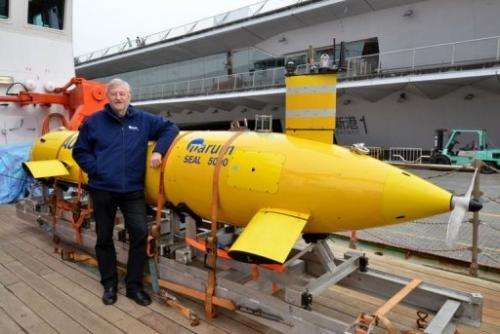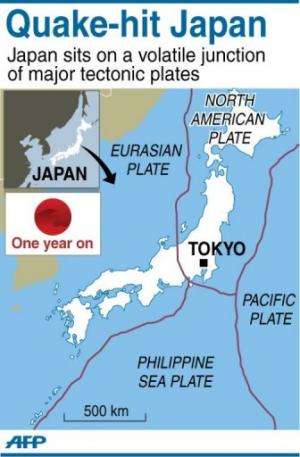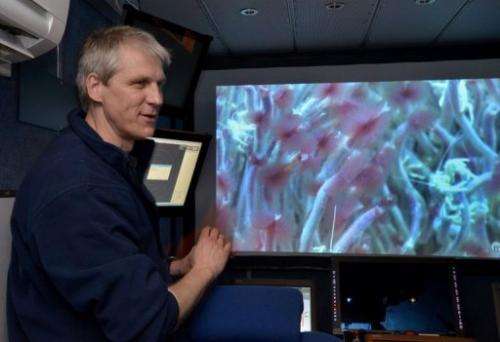Scientists survey seabed fractured by Japan quake

Scientists on Thursday launched a mission to the seabed off Japan where a massive quake triggered last year's devastating tsunami, to get their first proper look at the buckled ocean floor.
Researchers from Germany and Japan are sending high-tech vehicles to probe the seabed up to 7,000 metres (23,000 feet) below the surface where the massive seismic shock hit last March.
"We want to deploy instruments on the sea floor and also map the area to see the large changes caused by the earthquake," said Gerold Wefer, who is leading the project.
His team said the data gathered from the month-long mission covering a rupture zone stretching hundreds of kilometres (miles) would help them understand the mechanism of huge quakes and the tsunamis they can spawn.
The mission comes as Japan readies to mark the first anniversary of the 9.0 magnitude quake that unleashed a huge tsunami on March 11.
More than 19,000 people died and vast tracts of coastline were crushed by towering waves that rushed ashore, swamping the Fukushima Daiichi nuclear power plant and sparking the worst atomic accident in a generation.
Wefer, director of the German Centre for Marine Environmental Changes at Bremen University, told reporters he was feeling "quite high" ahead of the start of the mission.

He said scientists would see "huge cracks" in rocks that run parallel to the trench off the main Japanese island of Honshu.
"The rocks were broken into pieces" by the quake, releasing fluid and gas into the ocean, he said.
The team will use an autonomously controlled 5.5-metre (18-feet) vehicle, which looks like a small submarine, to map the sea floor with a multibeam sonar device.
The mothership from which the vehicle will be launched is equipped with echo sounders and will map several longer profiles extending from the shelf off Honshu across the deep-sea trench.
The new maps will be compared with profiles Japan had earlier obtained to shed light on what happened on the sea floor when the quake hit.

The epicentre of the quake was in the Pacific some 130 kilometres (80 miles) off Honshu, where an ocean tectonic plate slides below Japan.
A remotely-controlled 3.5-ton vehicle, equipped with cameras, sonar and lights and cabled to the ship, will install instruments at boreholes drilled earlier to activate a system to precisely measure future earthquakes.
The mission will also take sediment samples from the trench area, whose analysis scientists hope will help them find a very rough timing for the next huge tremor.
"If you think about earthquake predictions, it is very very difficult at this moment using present-day technology and data," said Shuichi Kodaira, of the Institute for Research on Earth Evolution, Japan Agency for Marine-Earth Science and Technology.
"But what we can do right now is that we can probably understand the recurrence or history of great earthquakes in the Japan Trench by using data from this cruise and from other cruises," he said.
Scientists have warned Japan appears to be entering a new stage of stress accumulation that could presage another devastating quake.
(c) 2012 AFP




















